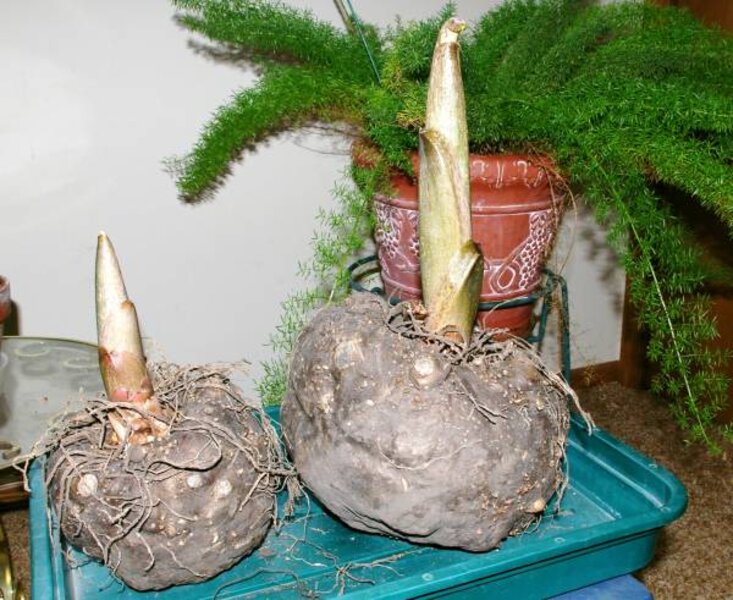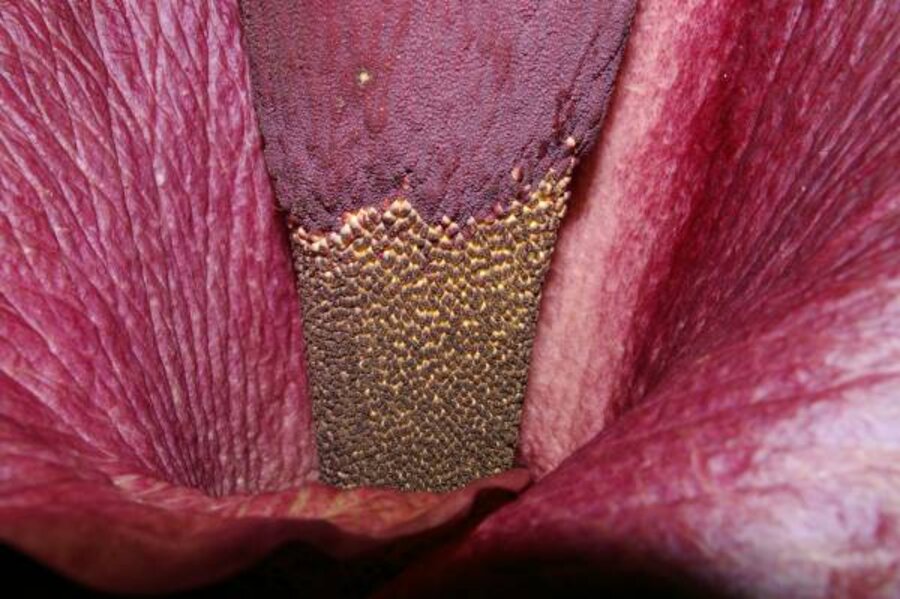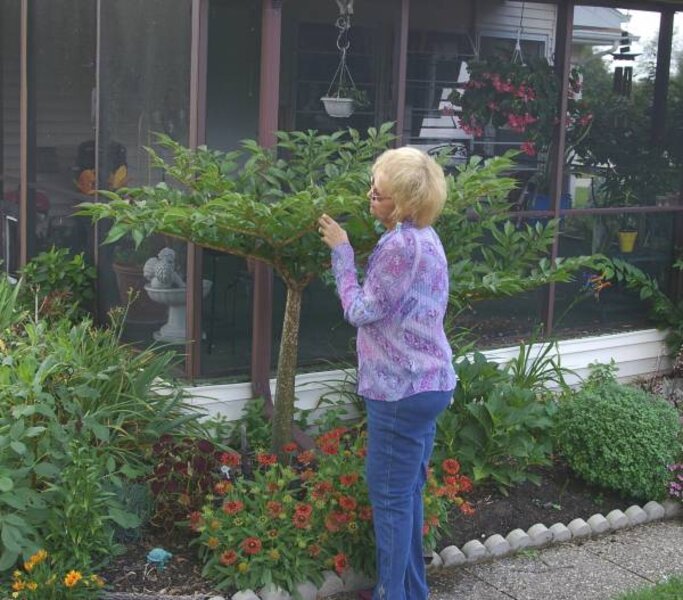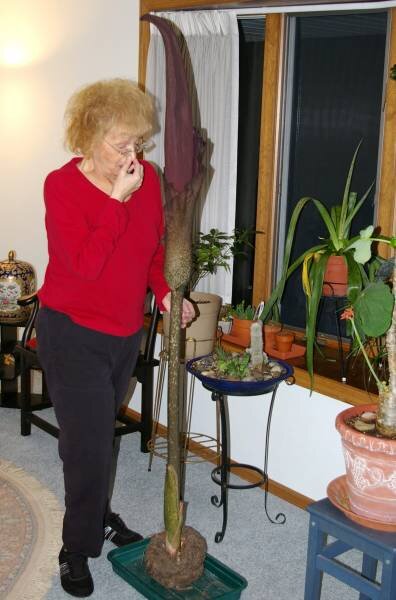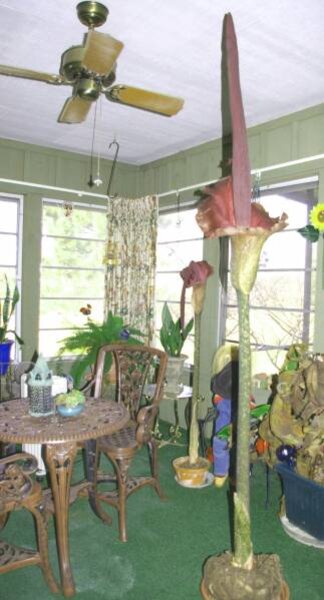An unusual plant with stinky flowers
Loading...
In late February, I spotted plump pink buds pushing out of two amorphophallus ‘Konjac’ tubers I stored in the sunroom last Halloween. The big guy weighed 28 pounds and little one 14 pounds then.
All that flesh should ensure smelly flowers of at least six feet in height by the end of this month. [Be sure to scroll through all three photos above and the three additional ones at left.]
The flowers that rise from the tubers are known for an odor likened to the aroma of rotting flesh, and the purple spathe that encompasses them has been equated by plant provocateur Tony Avent to the color of vinyl seat covers from a 1967 Plymouth Barracuda.
The odor is designed to attract carrion flies, which flock to dead bodies. They pollinate the tiny flowers on the spadix of any amorphophallus in nature. I’ve done it indoors with a paint brush to create seeds that grow into tiny plants.
Tubers grow outdoors during the hotter months, and I dig them up for storage after the first killing freeze and let them dry in the garage for a month.
I should say the foliage stage of the plant grows during the summer. It’s the fluorescent spathe and tiny odiferous flowers on the spadex that arise from naked tubers in early spring.
After tubers bloom and the huge stem, spathe, and spadix sink into a mushy pool of rot, tubers rest a couple of months. I plant them outdoors at the end of May when any chance of a freeze is gone.
A single bud again emerges to grow into a five-to-six-foot-tall maroon and green mottled stem. Atop that, a single whirl of tropical-looking leaves appear.
After the first freeze or two in the fall, that stem, too, collapses into a pool of mush. Meanwhile, the tuber has increased in size and spawned others.
Konjac is grown as a crop in India, China, Japan, and Thailand and used to create a flour and jelly of the same name. It is also used as a vegan substitute for gelatin.
Shirataki noodles are made from the jelly, too, and because they have zero carbohydrates, zero calories, and no gluten, they are perfect for diabetics and gluten-free diets.
Both of my tubers are in the west-facing bay window of the living room, growing six to eight inches in height daily. I’ll let them unfurl there and enjoy their “purplessence” beauty, but when the stench begins, both will be banished to the sealed sunroom, as they were in previous years.
On Easter Sunday, I hope that our guests will be treated to a gut-wrenching stench and the biggest, purple "Easter lily" they’ll ever see.
Doreen Howard, the Edible Explorer, is one of nine garden writers who blog regularly at Diggin' It. If it’s edible and unusual, Doreen figures out a way to grow it in her USDA Zone 4b garden. She’ll try anything once, even smelly Durian. A former garden editor at Woman’s Day, she writes regularly for The American Gardener and The Old Farmer’s Almanac’s Garden Guide.
-----
Editor’s note: To read more by Doreen Howard, click here. The Monitor’s main gardening page offers articles on many gardening topics. See also our blog archive and our RSS feeds. You may want to visit Gardening With the Monitor on Flickr. Take part in the discussions and get answers to your gardening questions. If you join the group (it’s free), you can upload your garden photos and enter our next contest.



